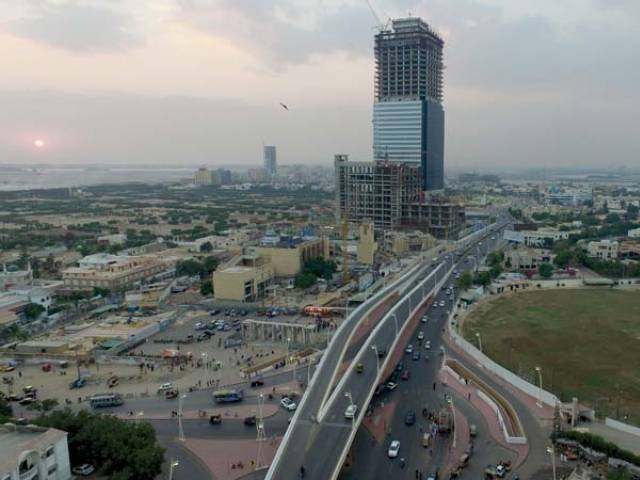
And why not? It sounds like a perfect strategy as governments take advantage of low-interest rates to finance lucrative megaprojects. During the 2008 global financial crisis, megaprojects stayed recession-proof; and have been since seen as a convenient policy lever to stimulate growth and fabricate aggregate demand.
For twin cities, 2016 passes sans development
However, the infrastructure boom in Pakistan has increased its exposure to debt – one which could trigger a possible financial crisis in the future. The total public debt has risen by 35% since 2013 with an increase of 28% in foreign debt. Much of the borrowing is being done on the prospect of future revenues from China-Pakistan Economic Corridor (CPEC) projects, such as toll revenues from the use of motorways.
But what if megaproject planners have been overestimating benefits and underestimating costs of these infrastructure projects? The consequences for an “economy on steroids” could be an economic “Pearl Harbour” for Pakistan.
Relying on borrowing alone, even concessional loans, to finance megaprojects is not a good idea as the injection of stimulus puts the burden of debt on future generations, especially in a scenario where future project cash-flows are uncertain. It will eventually lead to a rise in tax rates, specifically indirect taxes, which is not at all a feasible option.
Moreover, if urban planning is done poorly and centrally, chances are that it might not have a positive fiscal multiplier. For example, China has been building “ghost cities” for decades that are still largely unpopulated. The northern city of Kangbashi is considered as an urban failure. Meanwhile, Japan’s billions of investments on building bridges prove that even maxing out on the nation’s credit card won’t jump-start a troubled economy.
There is an imperative need to move away from the centralised planning approach – with an aim to promote private-public partnerships (PPP) on a model such as EPC (engineer, procure and construct) contracts instead of pure debt-based financing. Economic activity spurred by the private sector will act as a catalyst to produce more jobs and will create a positive fiscal multiplier effect.
The government may engineer a fund belonging to the infrastructure asset class – which is a unique hybrid of debt, equity and real estate. The long-term nature of such a fund will match it to requirements of pension funds, insurance companies and sovereign wealth funds. These financial entities usually invest in infrastructure via a self-contained entity that offers infrastructure-related products and services.
Transportation: Inefficient system denting GDP
A typical infrastructure project company usually has a well-defined business purpose. For example, it could be a PPP motorway project that involves financing, construction and managing operations under a long-term concession agreement for a period of somewhat 30 years.
At present, there is a market gap to meet requirements of Shariah-compliant pension and insurance funds; so a Sukuk and Shariah-compliant infrastructure fund will attract a lot of investors’ attention. An infrastructure or development bank, backed by government guarantees, may also be established to act as a creditor for project finance that can obtain capital market finance on favourable terms and then issue bonds.
Unfortunately, infrastructure projects are often politicised. For instance, projects related to Rapid Mass Transit in Lahore including the Orange Line Metro Train project shows that how long-term megaprojects can by stymied by short-term political considerations.
This explains why institutional investors such as pension fund managers are reluctant to embrace infrastructure investment as they are aware of the fact that infrastructure investments are not free from political risk.
So, is megaproject building spree a trusted canoe to navigate treacherous economic times? Yes, but only if the government plays off the front foot by preparing a holistic policy roadmap to engage the private sector.
The writer is a Cambridge graduate and is working as a management consultant.
Published in The Express Tribune, March 27th, 2017.
Like Business on Facebook, follow @TribuneBiz on Twitter to stay informed and join in the conversation.
































1714024018-0/ModiLara-(1)1714024018-0-270x192.webp)










COMMENTS (5)
Comments are moderated and generally will be posted if they are on-topic and not abusive.
For more information, please see our Comments FAQ